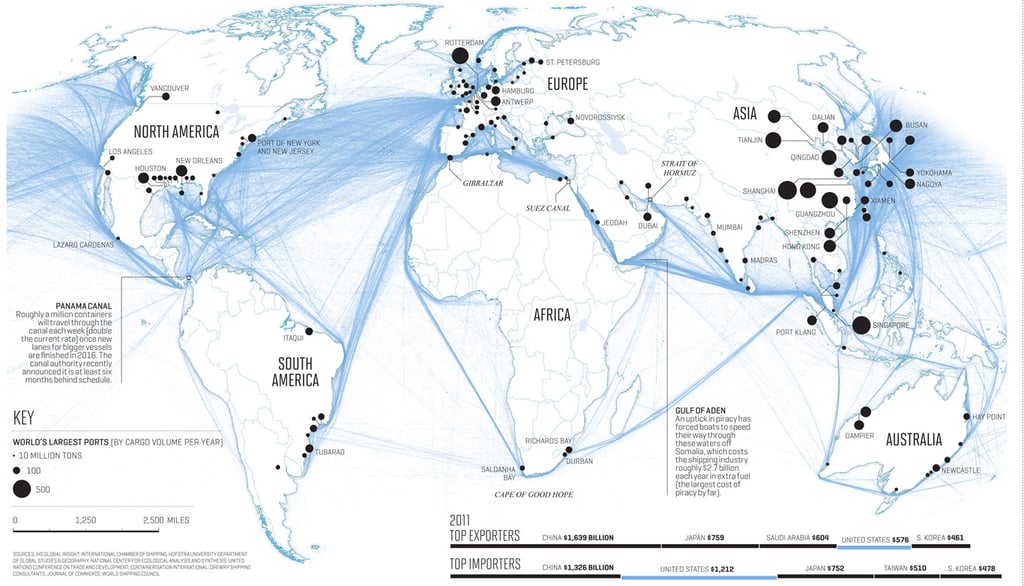How U.S. Involvement in the Israel-Iran Conflict Threatens Global Supply Chains
Explore how recent U.S. involvement in the Israel-Iran conflict is disrupting global supply chains. Learn about impacts on shipping, air cargo, energy markets, and strategies for resilience.
GLOBAL LOGISTICS
LogisticsFan
6/23/20253 min read


Recent escalations in the Middle East, especially direct U.S. military strikes in the Israel-Iran conflict, have pushed global logistics and supply chains closer to a breaking point. This post breaks down the critical risks and what they mean for international trade and businesses everywhere.
The Escalation: From Proxy Clashes to Direct Confrontation
The situation in the Middle East has taken a sharp turn. What started as proxy conflicts is now escalating into direct U.S. involvement, with strikes targeting Iranian nuclear sites. This new phase raises the stakes dramatically. President Trump’s tough rhetoric and Iran’s retaliatory threats to U.S. assets add fuel to the fire, intensifying regional instability and shaking the foundations of global supply chains.
Critical Chokepoints Under Threat
The Middle East holds some of the world’s most important maritime chokepoints—arteries through which huge volumes of goods and energy flow. These routes are now under unprecedented pressure:
Strait of Hormuz: This narrow passage handles 20-30% of the world’s oil trade. Recent GPS disruptions affecting over 900 vessels and a tanker collision highlight just how fragile this lifeline has become. Any disruption here would ripple through global energy markets instantly.
Bab el-Mandeb & Suez Canal: Already strained by Houthi attacks cutting Red Sea traffic by more than half, many ships are forced to reroute around the Cape of Good Hope—adding up to two extra weeks and significant cost increases. The ongoing conflict threatens to make this situation worse, squeezing global shipping capacity even further.
The Ripple Effect on Transportation
Disruptions in these key routes cause immediate and widespread impacts:
Ocean Freight: Longer routes around Africa increase fuel costs by roughly $1 million per voyage and tie up vessels for longer, reducing fleet capacity by 15-20%. Insurance premiums for risky routes have surged, sometimes quadrupling, adding millions in fees. Alternative ports are overwhelmed, causing congestion and delays.
Air Cargo: Airspace closures and reroutes over the Gulf and Central Asia force airlines into longer, more expensive paths. With fewer passenger flights, belly cargo capacity shrinks just as demand for air freight spikes due to sea lane delays—pushing prices 2-3 times higher on key routes. Israel’s recent airspace closure underscores how volatile this landscape is.
Land Transport: Though often viewed as a backup, land routes are increasingly vulnerable to border restrictions and security concerns, limiting their ability to absorb disrupted flows.
Energy Markets and Economic Fallout
The stakes extend far beyond transport:
Oil & Gas Prices: A full-blown conflict—especially involving the Strait of Hormuz—could send Brent crude prices soaring to $120-$150 a barrel, rivaling the 2008 spike. LNG supply disruptions would further pressure Asian and European gas markets.
Rising Transport Costs: Higher fuel prices translate directly into steep rises in shipping and trucking costs, squeezing margins and driving up prices across industries.
Global Inflation & Growth Risks: These cost pressures feed into inflation, hurting consumers and complicating monetary policy. Prolonged conflict risks slowing global GDP growth or even triggering recessionary conditions.
Who’s Most at Risk? Vulnerable Supply Chains
Industries that depend on tight, globalized supply chains will feel the pinch first:
Electronics & Automotive: These sectors rely heavily on components shipped through conflict zones. Delays and shortages threaten to halt production lines.
Consumer Goods: Everyday items could face price hikes and shortages as container shipping tightens, and costs rise.
Learning from History
Past Middle East conflicts offer clear lessons:
The 1973 Oil Embargo quadrupled prices, triggering global inflation and economic stagnation.
The Iran-Iraq and Gulf Wars showed how attacks on shipping and chokepoints can quickly spike oil prices and disrupt economies without a full closure.
What This Means Moving Forward
U.S. involvement has pushed an already unstable situation toward a global logistics crisis. Transport costs, insurance premiums, and energy prices are already climbing. Businesses and governments must prepare for prolonged disruption and rethink supply chain strategies in this new high-risk environment.
For the full breakdown with data-driven insights and detailed analysis, check out our comprehensive report: U.S. Involvement in the Israel-Iran Conflict: Implications for Global Logistics and Supply Chains.
